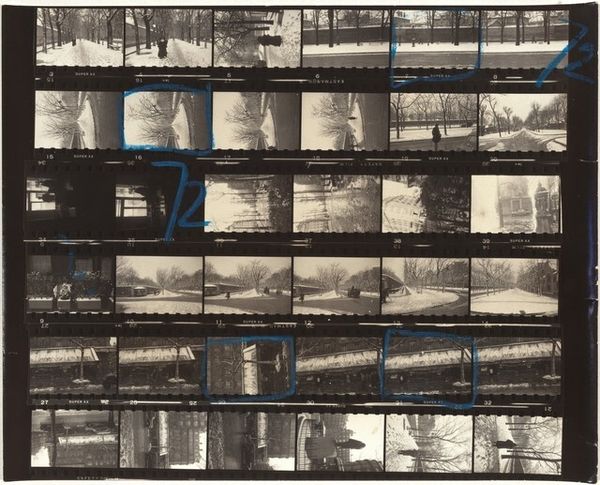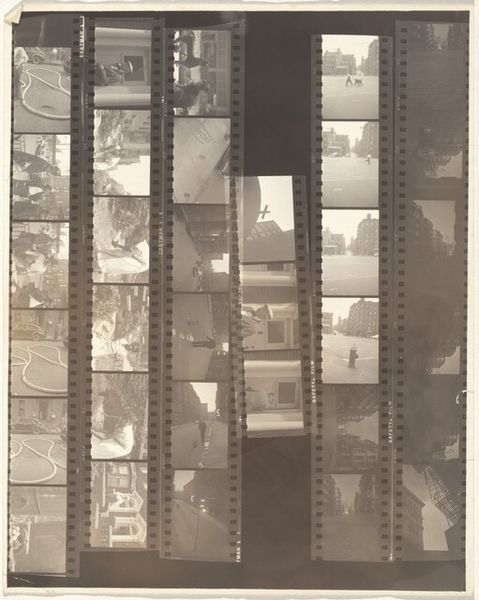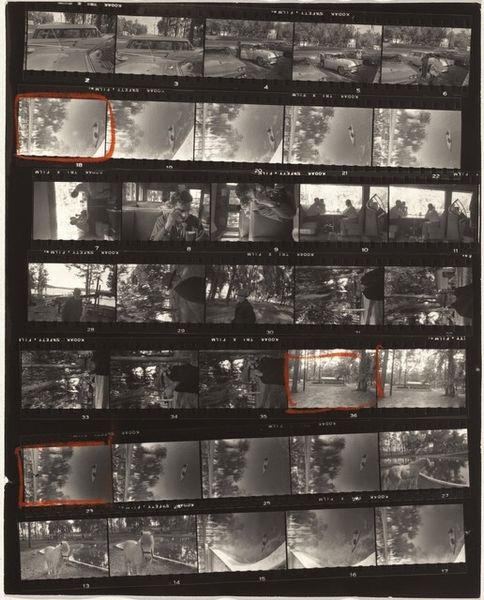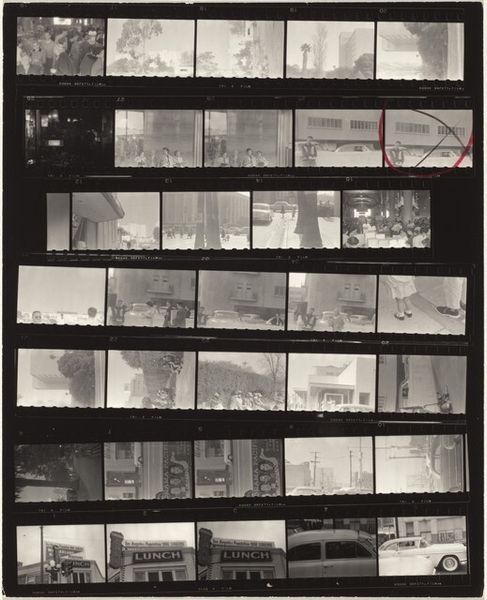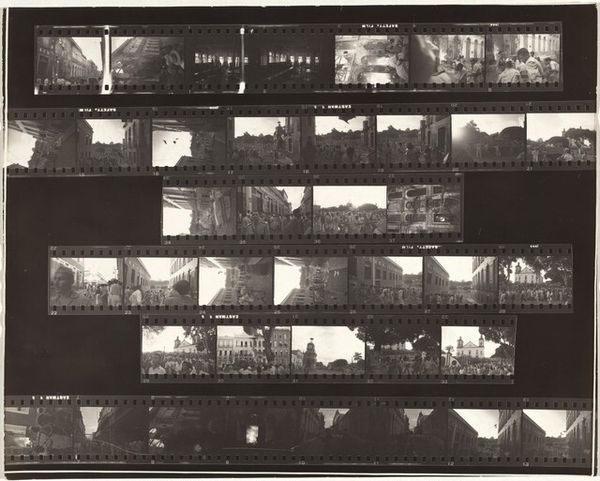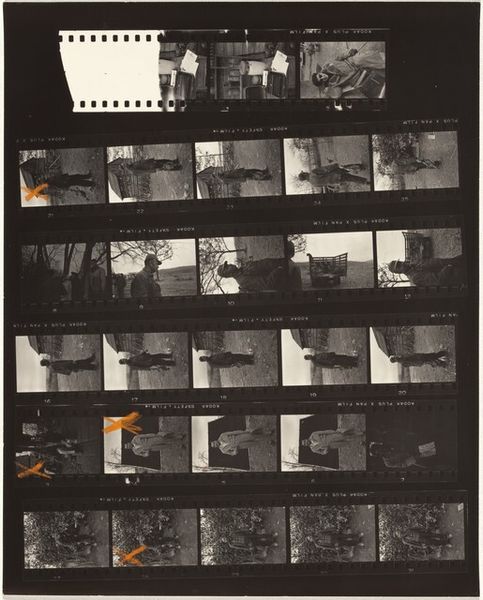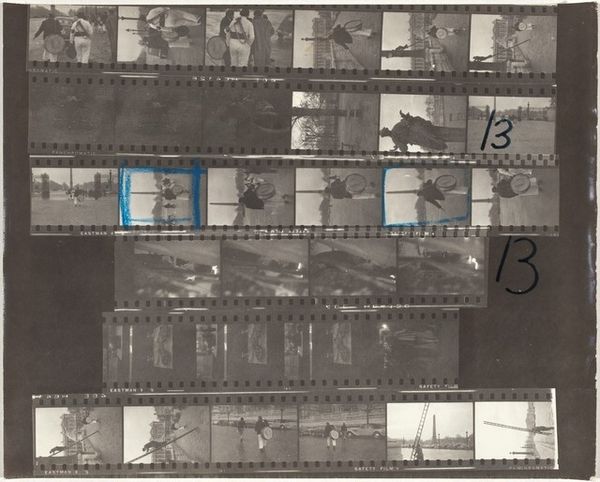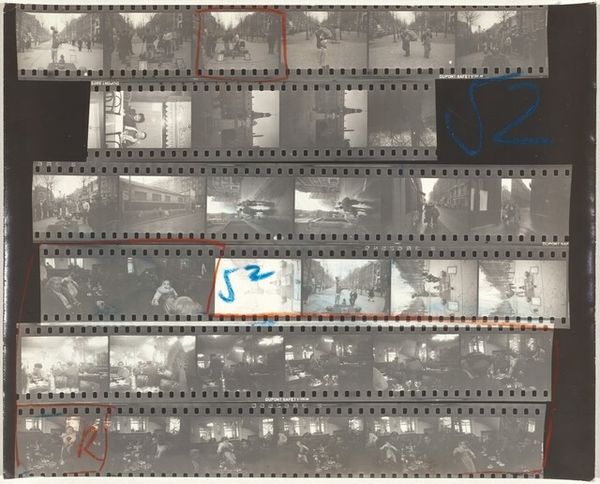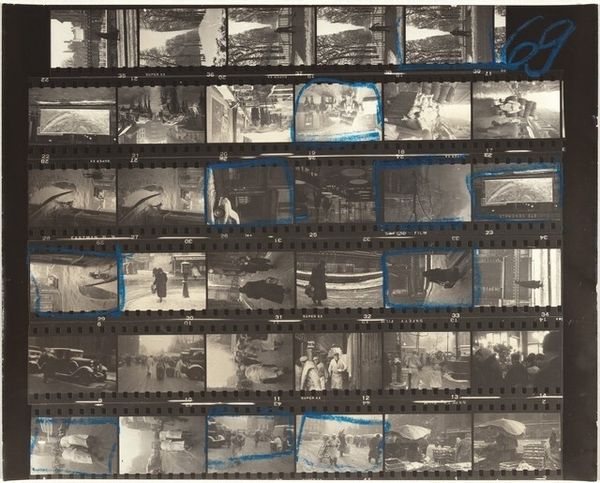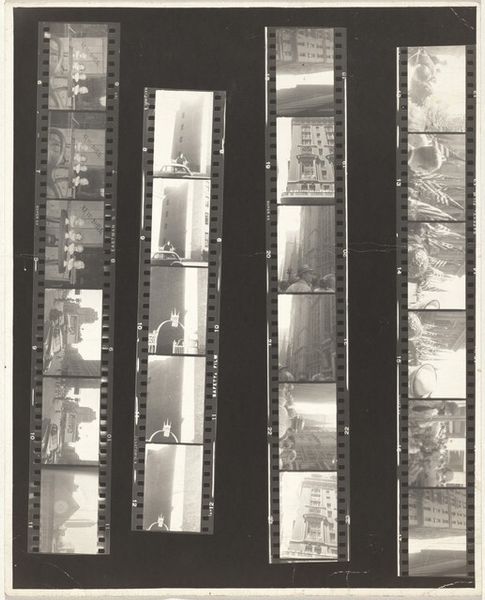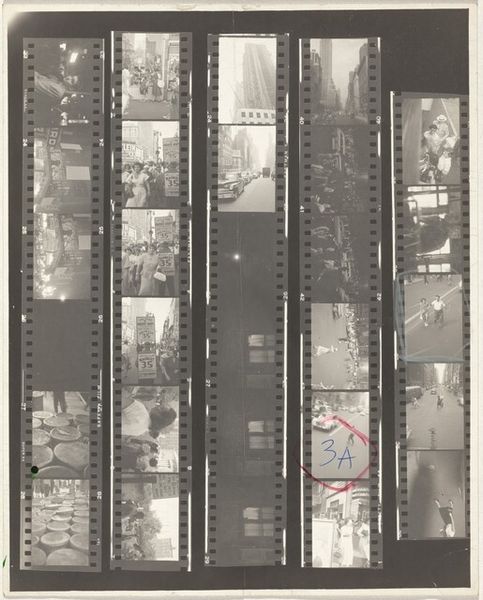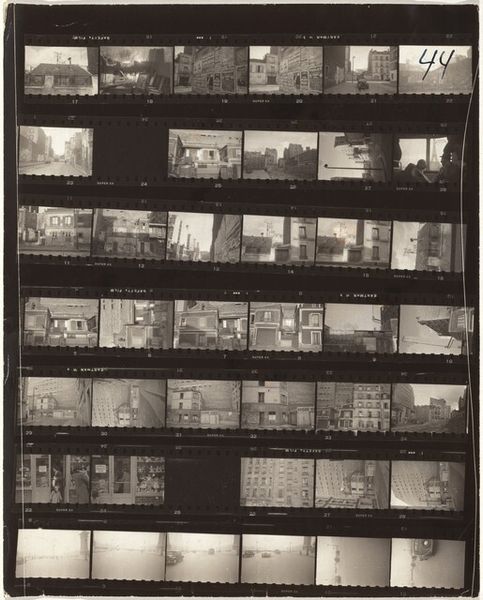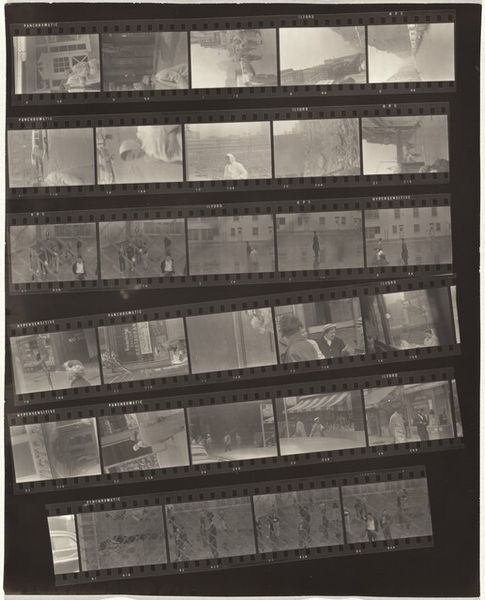
Dimensions: overall: 25.2 x 20.2 cm (9 15/16 x 7 15/16 in.)
Copyright: National Gallery of Art: CC0 1.0
Curator: Right, let's delve into Robert Frank's "Paris 54B," created between 1951 and 1952. It's a gelatin-silver print, a contact sheet showing multiple frames of his photography. What are your first thoughts? Editor: Chaotic, but intriguing. There's something raw and immediate about seeing the artist's process so explicitly laid out. It reminds me of flipping through someone's old photo album. Curator: The chaotic element certainly draws you in. Look closely at the repeated imagery - the Place de la Concorde's statue, for example. Notice how Frank returns to it, experimenting with angles and light. That statue, a symbol of French liberty, appears throughout the sheet. What emotions do you think the artist was conveying through its repetition? Editor: Perhaps the stability of the state against the fluidity of Parisian life around it? Also, that scribbled graffiti on some frames. Does this reveal an act of defacement, and thus add to a potential rejection of the city? How might Frank be inviting the viewer to experience a gritty Paris different from its image of romanticism and artistic freedom? Curator: The markings contribute to that tension. I think this relates directly to Frank’s status as an outsider. Also, look how some frames are much darker than others. How are they composed as we consider photography’s documentary claim? The dark patches could mean over-exposure but does this lead to thoughts on the role of the medium in documenting, interpreting and communicating on realities like 20th-century Parisian life? Editor: I am curious whether we have here elements of his eventual landmark publication The Americans brewing; his observational stance is taking shape with what, to me, feels like little romance or pity in this fragmented view of post-war Paris. And look at those sequences focusing on the street scenes. This all creates a rich visual archive, going beyond mere record-keeping. Curator: Exactly. There is cultural weight there, with visual symbolism and potential meanings still being discussed today. These photographic fragments capture a particular moment in time with deep meaning and are available to various interpretations from those seeking their own path through cultural history. Editor: Indeed, seeing it as a historical and cultural artifact opens new channels to reflect on Frank’s experiences of his time. Thank you, it's definitely given me a new perspective.
Comments
No comments
Be the first to comment and join the conversation on the ultimate creative platform.
